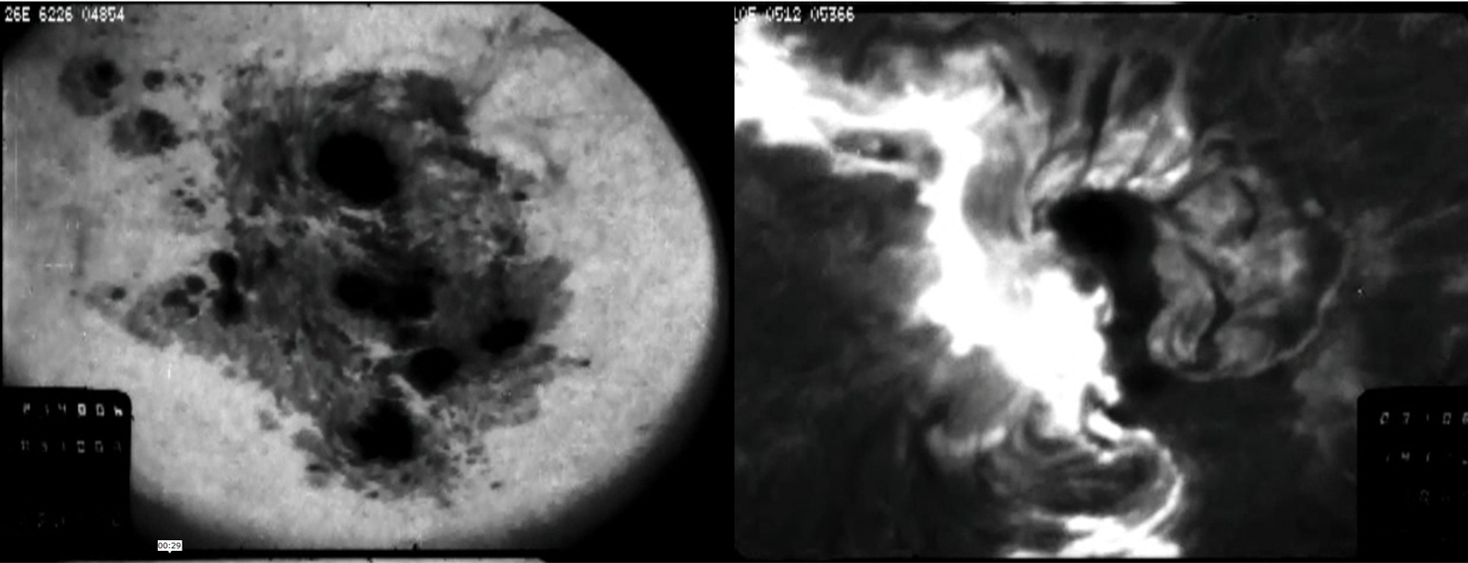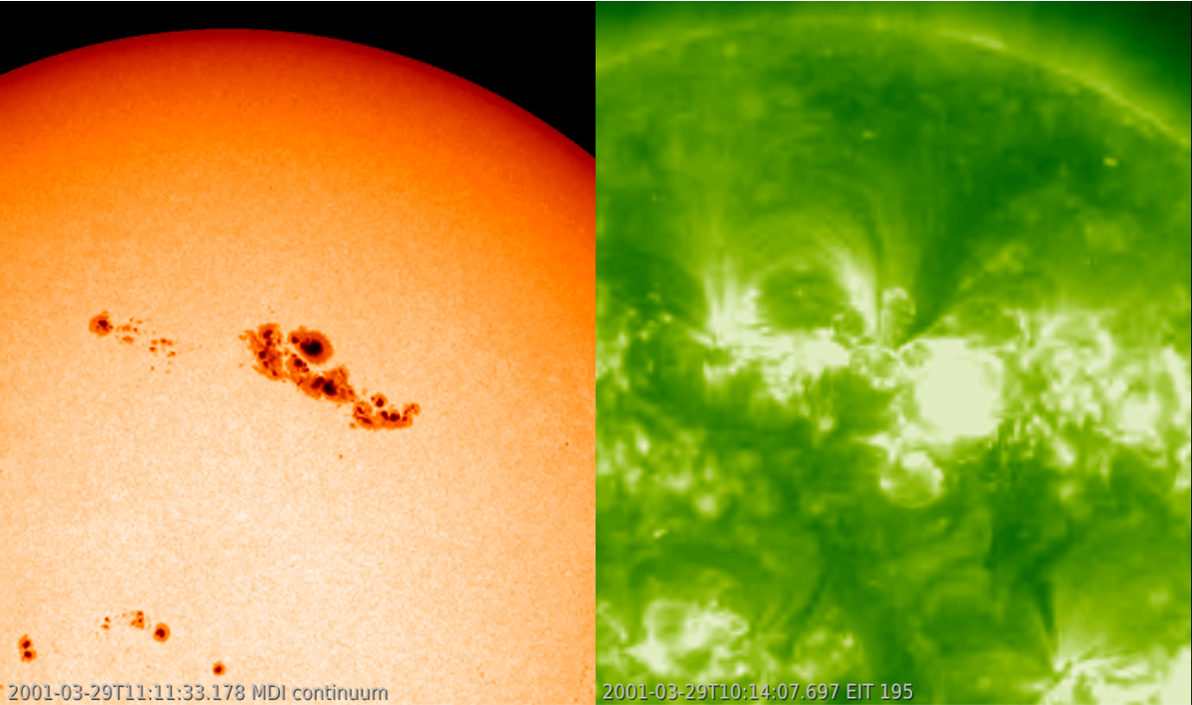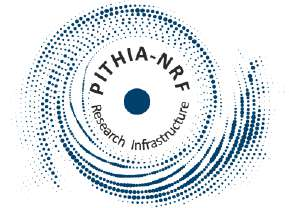Solar flares are violent eruptions on the Sun, often produced by complex, large sunspot groups. Intense solar flares may affect radio and satellite communcations, and radar operations. Applications based on GNSS (Global Navigation Satellite Systems, such as GPS and Galileo) may be impacted. Some of the flares may be accompanied by fast energetic particles ("proton events") or huge magnetic clouds filled with charged particles (coronal mass ejections or "CMEs"). When they arrive near the earth environment, they have their own specific impacts on very specific technologies. Many of these eruptions are produced by just a few very active sunspot groups, labeled superactive regions (SARs). Studying these SARs may reveal something about solar flare generation and about flares and spots on other stars.
The images underneath show X-class events in SAR NOAA 5395 on 10 March 1989 (Credits Big Bear Solar Observatory / New Jersey Institute of Technology), NOAA 9393 on 29 March 2001 (SOHO MDI and EIT), NOAA 12192 on 24 October 2014 (SDO HMI and AIA), and NOAA 13664 on 11 May 2024 (SDO HMI and GOES SUVI). The white light image is on the left, the eruption is portrayed on the right in H-alpha or extreme ultraviolet.

SARs have been studied since the late 1980s and have to satisfy some very specific criteria (Chen et al. 2011). First, the parameters should be mostly independent, each providing a complementary insight into SAR physics. Secondly, these parameters should be easy to access, have a long time-interval coverage, and be contained in a database with standard calibrations. Thirdly, the number of parameters should be as small as possible to ensure that the selection of SARs is both simple and unique. Since the paper by Chen et al. 2011, the parameters and minimum thresholds that are usually employed to parameterize a SAR are (1) the maximum area of the sunspot groups must be at least 1000 MH, (2) the soft x-ray flare index should be at least 10, (3) there should be at least 1 associated radio burst at 10.7 cm with a peak flux of at least 1000 sfu, and (4) the shortterm total solar irradiance decrease (delta TSI) should be at least 0.1%. Note that the soft x-ray flare index is the sum of the numerical multipliers of M- and X-class flares of the active region, i.e. 0.1 for an M1 flare and 1.0 for an X1 flare. E.g. if an active region produces an X3.4 and an M7.0 flare during its transit, then the corresponding flare index is 4.1.

An active region is refered to as a SAR, if three of the four aforementioned conditions are fulfilled. An extreme flare-prolific active region may also be considered as a SAR if the soft X-ray flare index is larger than 15.0 and any one of the other criterion conditions is met. For the solar cycles SC21 to SC23, Chen et al. (2011) were able to identify 45 SARs that satisfied the set of conditions. The SARs in this 33-year period occupy only 0.44% of all the active regions in the three solar cycles, but produced an impressive 44% of all the X-class flares during the same time interval. The productivity was 4.13 X-class flares per SAR, which is two orders of magnitude larger than the productivity of an average active region. Also, based on SOHO coronagraphic observations starting from the mid 1990s, a very large majority of these SARs produced at least one CME with a velocity larger than 1500 km/s.

A few years ago, Chen and collaborators (Chen et al. 2022) then repeated the exercise for the weak solar cycle 24 (SC24). They were able to identify six SARs (0.31% of all the active regions in SC24) accounting for 30.6% of all the X-class flares in Solar Cycle 24. The SAR's productivity of X-class flares is about 100 times the average productivity of X-class flares for all active regions, which is consistent with the earlier findings for SC21-SC23. However, the productivity was only 2.5 X-class flares per SAR in SC24, much lower than the average of 4.13 X-class flares during the preceding three solar cycles. Four of the six SARs produced CMEs faster than 1500 km/s. All these results suggest that the activity level of SC24 was much weaker than that of the preceding solar cycles.

So, how is the ongoing SC25 doing? A quick survey of the available NOAA/SWPC data and the SIDC Total Solar Irradiance (TSI) composite (Dewitte et al. 2022), taking into account the "upscaling" of the solar flares starting with GOES-16, reveals that there have been 4 SARs so far in SC25, all visible in 2024. There's no doubt about active regions NOAA 13664 and 13842, but NOAA 13663 and 13848 had to be deliberated for slightly too small sunspot area. These four groups represent 0.29% of all sunspot groups so far this solar cycle, producing 27.8% of all X-class flares. The productivity was 5.5 X-class flares per SAR, which is more than two orders of magnitude larger than the productivity of the other active regions. The graph underneath shows the number of SARs per year since the start of the GOES measurements in 1976. The 2024 value is of course preliminary.






